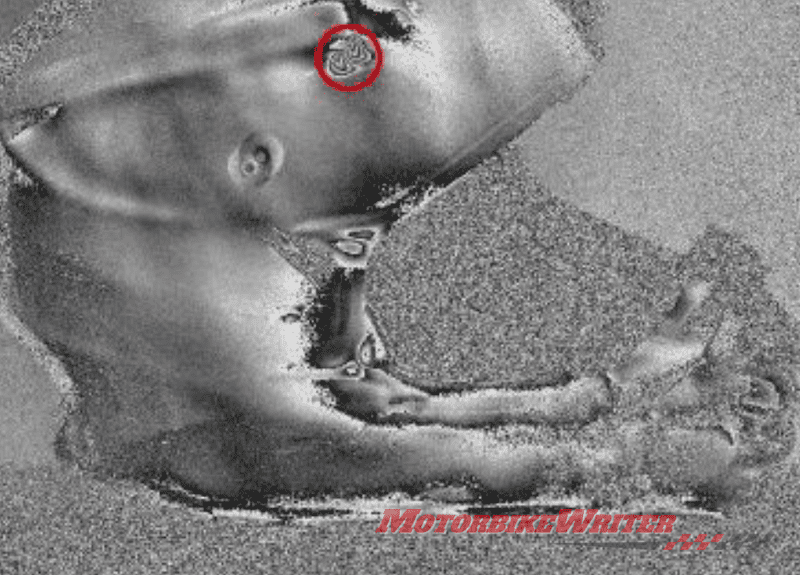A helmet scanner service that checks for hidden fractures in your helmet has reached the halfway point in investment funding and is calling for more riders to respond to their survey.
The Helmet Doctors who developed the helmet laser scanner say it would give riders peace of mind that their helmet is safe to use after a drop or crash, or whether it needs to be replaced.
Helmet Doctors CFO Scott Robinson, who founded the venture with his son, Brayden, says they have raised half of the maximum amount of investment capital required to match a $1 million Federal Government grant.
“This means we are only looking for the remaining $500,000 to create a $2 million start towards a commercialisation rollout.
“A lot of potential investors are somewhat more cautious about start-up opportunities and as you know a lot of the sporting industries have been significantly impacted (FIA & FIM) in their day-to-day operations due to COVID 19.
“We have had an explosion of interest on who we are and what we do with an overwhelming amount of support for our services.”
Scanner support
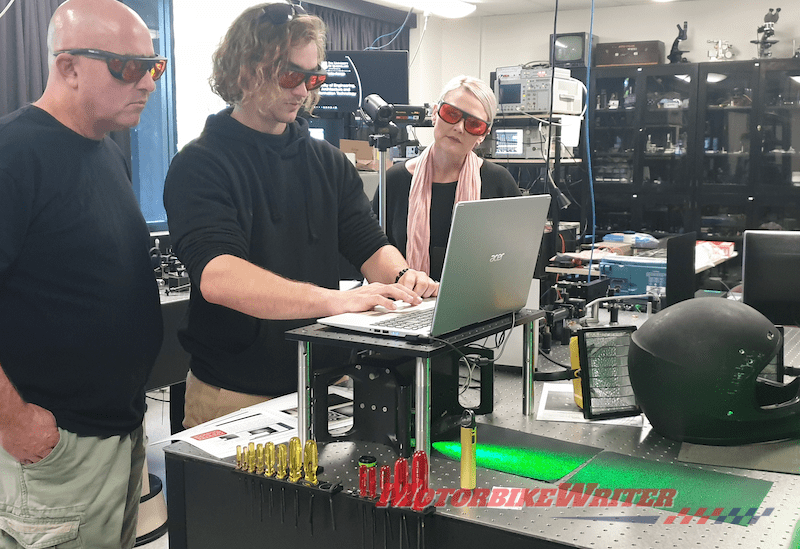
Last year, the Sunshine Coast family business asked Motorbike Writer to publish a link to a survey about their service and has now received 546 respondents.
More than 70% of respondents supported a $40 helmet scanning service to check for hidden fractures in your helmet.
The survey was important in Helmet Doctors seeking government funding as they needed to know it would be well received by riders, racers and the motorcycle industry.
AusIndustry commercialisation advisors told the company that if we received 100 responses it would be good, 200 would be convincing and 300 would be conclusive.
They are still keen for riders to fill out the survey.
Scott says they are “flat out like a lizard drinking” and now have staff trained and accredited in NDT laser techniques.
“We have had recent business presentations and talks with one of the major OEM companies about being a value-add service in their chain of stores,” Scott says.
“We will be talking in more detail of this potential partnership once COVID-19 restrictions are further relaxed and the business community can get back to some sort of normality.
Crash starts study
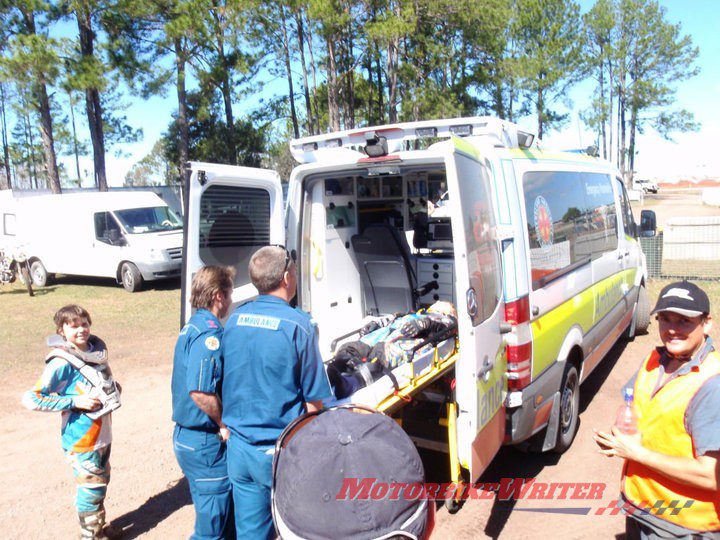
Scott and Brayden began researching a helmet scanning system after Brayden was hospitalised with a fractured skull from a motocross crash.
They developed their device with the help of a Belgian company and the Composites Research Group in the School of Mechanical and Mining Engineering at The University of Queensland.
“We found this laser scanning technique can categorically guarantee that, if there is any damage to the helmet’s outer shell, our technique will identify it. It’s ground-breaking, proven science,” Scott says.
Need for scanning
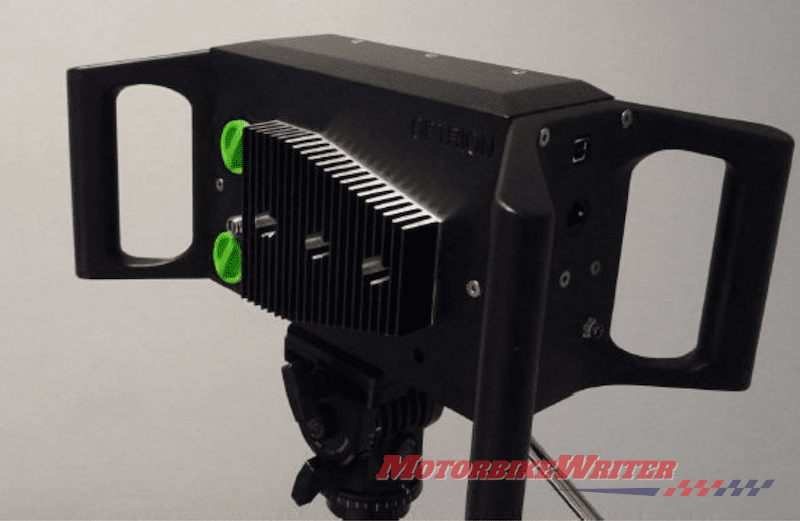
Scott says very few riders know exactly when to replace their helmet.
Manufacturing safety standards say a composite helmet has a lifespan of five years and, if used frequently, about three years.
But what if you drop it or have a crash?
“We have all heard how if you drop your helmet once you should replace it. But very few do this,” Scott says.
“No one knows how much impact a composite helmet can tolerate before the shell is critically weakened.
“Composite materials have many layers and tiny fibres that can be damaged in a fall.
“The impact energy is dispersed among the fibres and away from the brain which it is designed to do.
“This is why a dropped helmet may still look ok.
“However, the impact could have led to a small crack or splintering which you can’t see with the naked eye.
“Our device can view, read and record the helmet 100,000 times better than the naked eye and find if there are any cracks, splintering or deformations which would make the helmet defective and unable to withstand another impact.”
Helmet scanning scheme
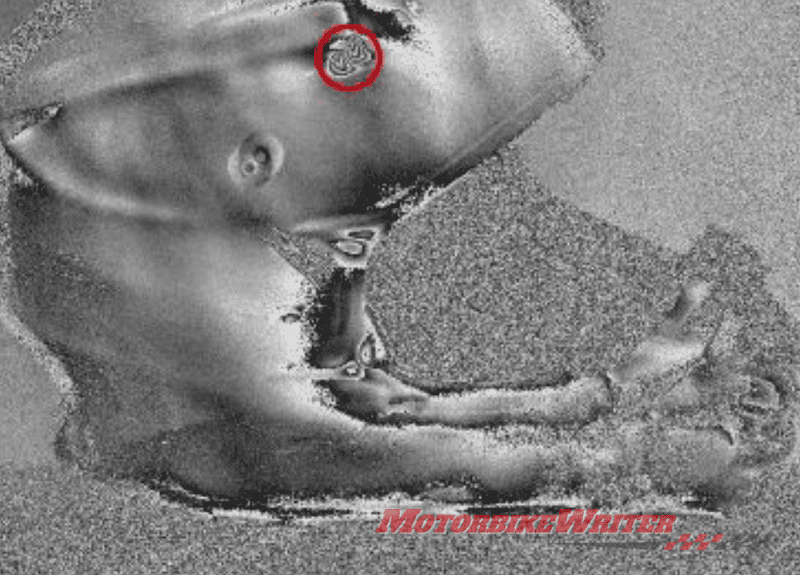
The Helmet Doctors plan to test their service first in South East Queensland.
Riders would take their helmet to a participating motorcycle dealer where they would leave it and pick it up a few days later.
The helmet would be sent to the nearest scanner depot where it would be scanned, assessed and returned.
“As you could imagine this experimental laser camera is very expensive, but our goal is to make this service accessible and cheap enough for everyone to use it,” Scott says.
If the project is successful, they hope to extend the service to other states and overseas.


